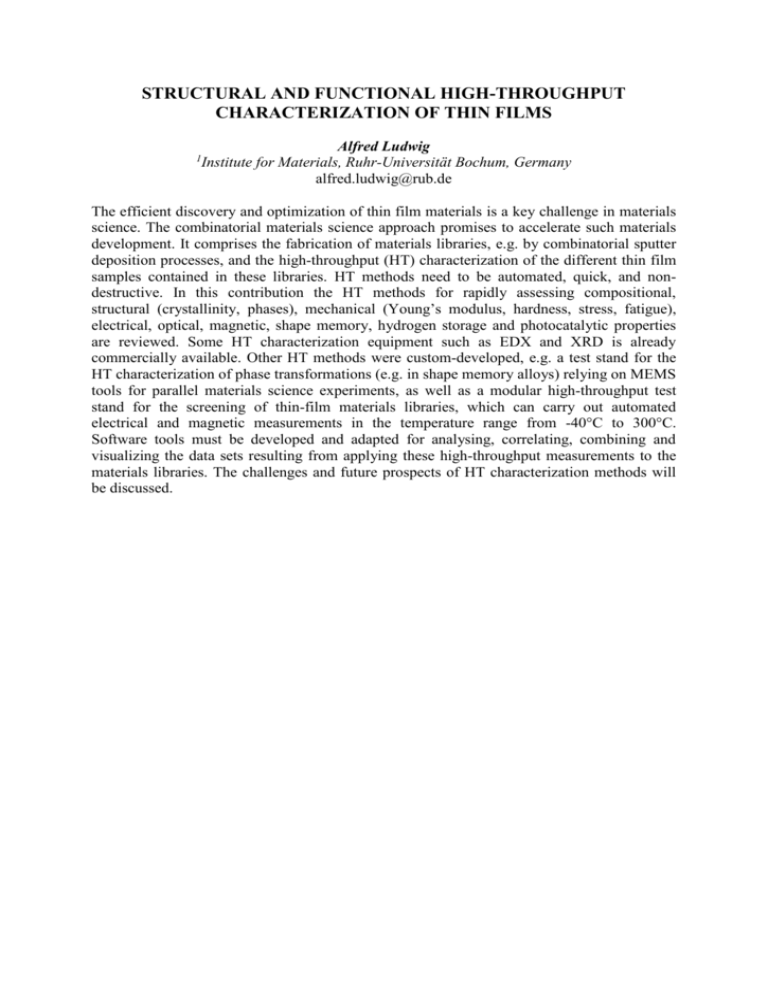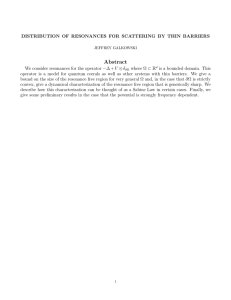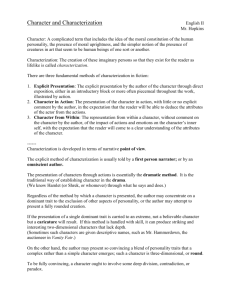structural and functional high-throughput characterization of thin films
advertisement

STRUCTURAL AND FUNCTIONAL HIGH-THROUGHPUT CHARACTERIZATION OF THIN FILMS 1 Alfred Ludwig Institute for Materials, Ruhr-Universität Bochum, Germany alfred.ludwig@rub.de The efficient discovery and optimization of thin film materials is a key challenge in materials science. The combinatorial materials science approach promises to accelerate such materials development. It comprises the fabrication of materials libraries, e.g. by combinatorial sputter deposition processes, and the high-throughput (HT) characterization of the different thin film samples contained in these libraries. HT methods need to be automated, quick, and nondestructive. In this contribution the HT methods for rapidly assessing compositional, structural (crystallinity, phases), mechanical (Young’s modulus, hardness, stress, fatigue), electrical, optical, magnetic, shape memory, hydrogen storage and photocatalytic properties are reviewed. Some HT characterization equipment such as EDX and XRD is already commercially available. Other HT methods were custom-developed, e.g. a test stand for the HT characterization of phase transformations (e.g. in shape memory alloys) relying on MEMS tools for parallel materials science experiments, as well as a modular high-throughput test stand for the screening of thin-film materials libraries, which can carry out automated electrical and magnetic measurements in the temperature range from -40°C to 300°C. Software tools must be developed and adapted for analysing, correlating, combining and visualizing the data sets resulting from applying these high-throughput measurements to the materials libraries. The challenges and future prospects of HT characterization methods will be discussed.








